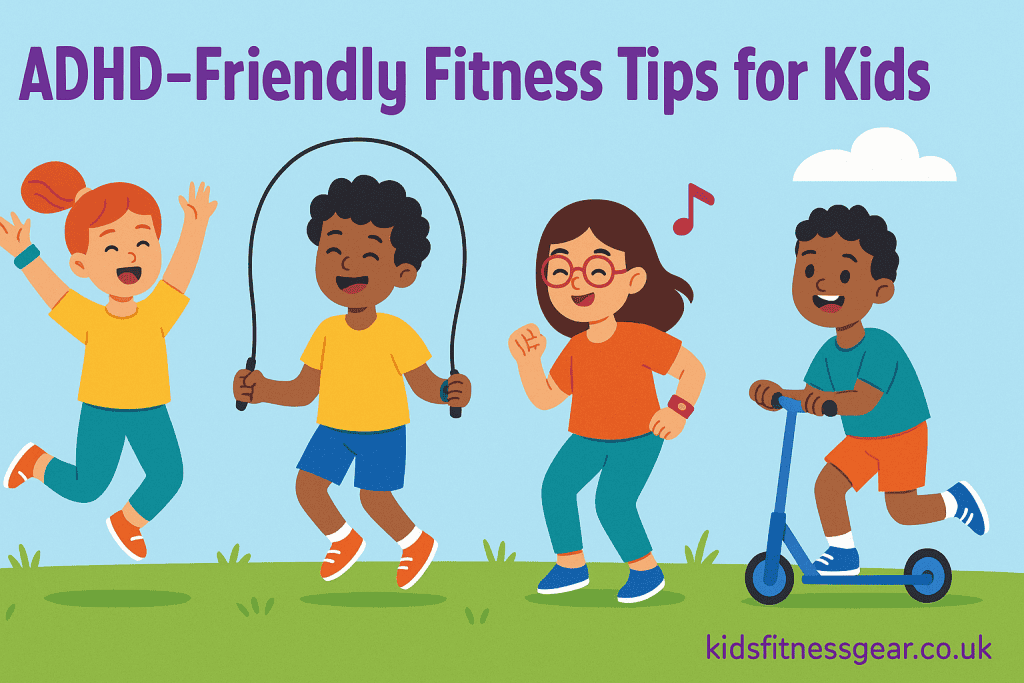Children with ADHD benefit immensely from regular movement—but the key is to keep it fun, structured, and aligned with how they process the world. Here’s how to turn exercise into an engaging tool that boosts focus, regulates energy, and supports healthy routines.
🧠 Why ADHD + Movement Matters
Kids with ADHD can experience:
- Poor impulse control
- Restlessness and high energy
- Short attention spans
- Emotional dysregulation
Research shows regular physical activity helps improve focus, reduce hyperactivity, and regulate mood and sleep. Movement can be an empowering, medication-free tool for supporting ADHD.
⚙️ Smart Fitness Tips for ADHD Kids
1. Keep Sessions Short
Aim for 10–15 minutes of high-energy movement in bursts rather than long workouts.
2. Use Visuals & Timers
Try visual timers or watch reminders.
3. Make it a Game
Create obstacle courses or do a “Simon Says” fitness edition. Use reward charts or badges!
4. Add Music
Build a playlist with your child. Use music to pace movements or calm down post-workout.
5. Reward Effort
Celebrate participation, not performance. Use stickers, tokens, or praise.
🏃 Great ADHD-Friendly Activities
- Trampoline jumping
- Karate or martial arts
- Swimming
- Dance routines or Zumba
- Climbing walls
- Cycling or scooter rides
- Yoga with animal poses
- Hula hooping
📱 Helpful Fitness Tools
- GoNoodle – Movement + mindfulness videos for kids
- Garmin Bounce – Tracks movement + sets reminders
- Sworkit Kids – On-demand workouts with structure
- Visual Timers – Time awareness + transitions
👪 Parent Support Tips
- Let kids choose music or moves
- Keep a visible routine chart
- Join in for motivation
- Don’t force “structured” sports—focus on joy
- Encourage mini movement breaks during screen time
✅ Sample ADHD Fitness Routine (20 Min)
| Time | Activity |
|---|---|
| 0–3 min | Warm-up – arm circles, marching in place |
| 3–8 min | High energy – frog jumps, skipping |
| 8–13 min | Game – obstacle course or balloon keep-up |
| 13–18 min | Dance or silly moves with music |
| 18–20 min | Cool down – breathing, stretching |
🎯 Final Thoughts
Fitness doesn’t have to be formal. For children with ADHD, movement is most effective when it’s structured but playful, short but consistent, and above all—positive.
Whether it’s dancing, jumping, or using a smartwatch to track progress, every bit of movement can help build a foundation for lifelong health and self-confidence.
👉 Want tools to make this easier?
Check out our guide: Best Fitness Watches for ADHD Kids (UK Guide) or try Fun games indoors that burn energy

